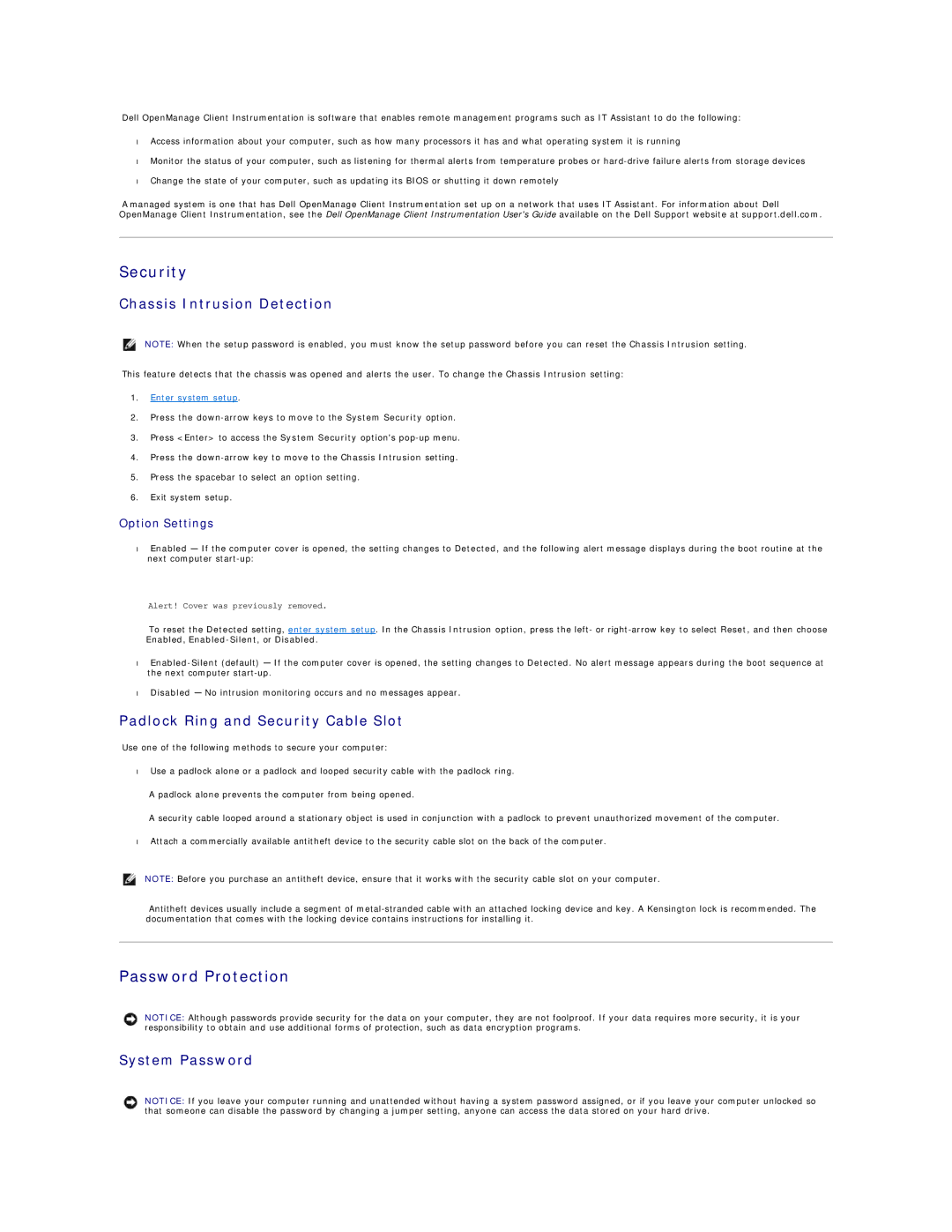
Dell OpenManage Client Instrumentation is software that enables remote management programs such as IT Assistant to do the following:
•Access information about your computer, such as how many processors it has and what operating system it is running
•Monitor the status of your computer, such as listening for thermal alerts from temperature probes or
•Change the state of your computer, such as updating its BIOS or shutting it down remotely
A managed system is one that has Dell OpenManage Client Instrumentation set up on a network that uses IT Assistant. For information about Dell OpenManage Client Instrumentation, see the Dell OpenManage Client Instrumentation User's Guide available on the Dell Support website at support.dell.com.
Security
Chassis Intrusion Detection
NOTE: When the setup password is enabled, you must know the setup password before you can reset the Chassis Intrusion setting.
This feature detects that the chassis was opened and alerts the user. To change the Chassis Intrusion setting:
1.Enter system setup.
2.Press the
3.Press <Enter> to access the System Security option's
4.Press the
5.Press the spacebar to select an option setting.
6.Exit system setup.
Option Settings
•Enabled — If the computer cover is opened, the setting changes to Detected, and the following alert message displays during the boot routine at the next computer
Alert! Cover was previously removed.
To reset the Detected setting, enter system setup. In the Chassis Intrusion option, press the left- or
•
•Disabled — No intrusion monitoring occurs and no messages appear.
Padlock Ring and Security Cable Slot
Use one of the following methods to secure your computer:
•Use a padlock alone or a padlock and looped security cable with the padlock ring.
A padlock alone prevents the computer from being opened.
A security cable looped around a stationary object is used in conjunction with a padlock to prevent unauthorized movement of the computer.
•Attach a commercially available antitheft device to the security cable slot on the back of the computer.
NOTE: Before you purchase an antitheft device, ensure that it works with the security cable slot on your computer.
Antitheft devices usually include a segment of
Password Protection
NOTICE: Although passwords provide security for the data on your computer, they are not foolproof. If your data requires more security, it is your responsibility to obtain and use additional forms of protection, such as data encryption programs.
System Password
NOTICE: If you leave your computer running and unattended without having a system password assigned, or if you leave your computer unlocked so that someone can disable the password by changing a jumper setting, anyone can access the data stored on your hard drive.
